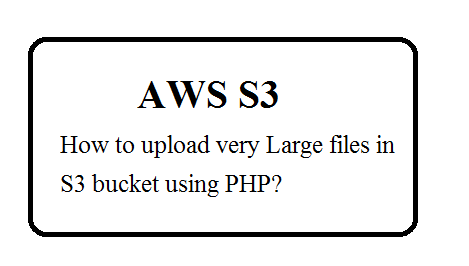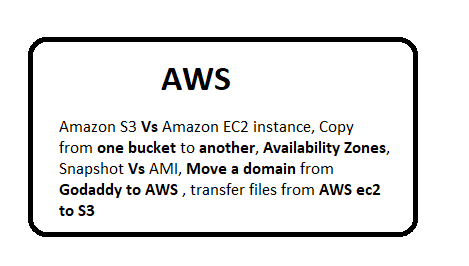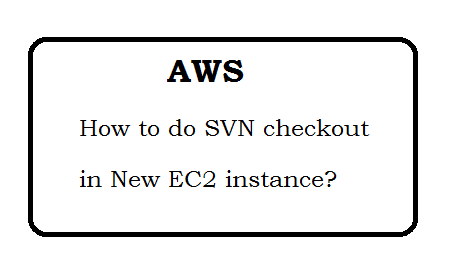Question: what is lightsail in AWS?
Lightsail is designed to be the easiest way to launch and manage a virtual private server(VPS) with AWS.
With Amazon Lightsail, you can deploy a VPS with just a few clicks using preconfigured templates for your favorite Linux distribution application.
Question: What is Amazon Elastic Container Service?
Amazon Elastic Container Service (Amazon ECS) is a highly scalable, fast,
container management service that makes it easy to run, stop, and manage Docker containers on a cluster.
Amazon ECS lets you launch and stop container-based applications with simple API calls.
Question: What are Features of Amazon ECS?
- Cost-efficient
- Improved Compatibility
- More Secure
Question: What is Lambda?
AWS Lambda is a compute service that lets you run code without managing servers.
AWS Lambda executes your code only when needed and scales automatically, from a few requests per day to thousands per second.
Question: What is Elastic beanstack?
AWS Elastic Beanstalk makes it even easier for developers to quickly deploy and manage applications in the AWS Cloud.
Question: What is Amazon CloudWatch?
Amazon CloudWatch is a monitoring service for cloud resources and the applications.
Question: What is Amazon CloudTrail?
AWS CloudTrail is a web service that records AWS API calls for your account and delivers log files to you.
Question: What is Amazon Autoscaling?
An AWS service that can launch Amazon EC2 instances automatically as per traffic and stop the EC2 instances when traffic decrease.
Question: What is AWS CloudFormation?
AWS CloudFormation is a service that helps you model and set up your AWS resources so that you can spend less time managing resources and more time focusing on your applications.
Question: What is Amazon OpsWorks?
AWS OpsWorks is a configuration management service that helps you configure and operate applications in a cloud.
Question: What is AWS Service Catalog?
AWS Service Catalog allows organizations to create and manage catalogs of IT services that are approved for use on AWS.
Question: What is AWS Trusted Advisor?
It is Web Service which monitor your account and gives suggestions regarding below:
1) Security
2) Cost Optimization
3) Performance
4) Fault Tolerance
5) Service Limits
Question: What is AWS Managed Service Provider?
AWS Managed Service Provider (MSP) Partners are skilled at cloud infrastructure/application migration, and deliver value to customers by offering proactive monitoring, automation, and management.
Question: What is AWS EFS?
Amazon EFS provides simple, scalable file storage for use with Amazon EC2 instances in the AWS Cloud.
Amazon EFS, storage capacity is elastic, growing and shrinking automatically as you add and remove files.
Question: What is Amazon Glacier?
Amazon Glacier is an online file storage web service that provides storage for data archiving and backup. this is very-ver cheap as compare to S3 and EFS but it is not available everytime.
When you request for data in Amazon Glacier, data will available after 3-4 hours.
Question: What is Storage Gateway?
AWS Storage Gateway is a hybrid storage service that enables your on-premises applications to seamlessly use AWS cloud storage.
You can use for archiving and backup, recovery, cloud bursting, storage tiering, and migration.
Question: What is Elastic transcoder?
Amazon Elastic Transcoder lets you convert media files that stored in S3 into media files in the formats required by client devices.
For example
You have upload the audio file in AWS S3, you can play the audio in all the application (IOS/Android).
Question: What is Amazon Kinesis Video Streams?
Amazon Kinesis Video Streams makes it easy to securely stream video from connected devices to AWS for analytics, machine learning and other processing.
Question: What are Benefits of Kinesis Video Streams?
- Stream video from millions of edge devices
- Easily build vision-enabled apps
- Secure
- Durable, Searchable storage
- No infrastructure to manage
- Build both real-time and batch applications
Question: What is ElastiCache?
ElastiCache is a web service that makes it easy to set up, manage, and scale a distributed in-memory data store or cache environment in the cloud.
Question: What is AWS MFA?
Full form of MFA is Multi-Factor Authentication.
MFA adds an extra layer of protection on top of your username and password in Login.
Question: What Is IAM? - AWS Identity and Access Management?
Full form of IAM is AWS Identity and Access management.
IAM would have following component
- IAM Groups: An IAM group is a collection of IAM users.
- IAM Users: A user which is going to use access the credentials.
- IAM Roles: An IAM role is very similar to a user but does not have credentials.An IAM user can assume a role to temporarily take on different permissions for a specific task.
- Temporary Credentials: Temporary credentials are primarily used with IAM roles. User can request temporary credentials that have a more restricted set of permissions than your standard IAM user.
Question: What are IAM roles?
IAM roles are a secure way to grant permissions to entities that you trust.
Question: Question: What is ARN?
An Amazon Resource Name (ARN) is a file naming convention used to identify a particular resource in the Amazon Web Services (AWS).
ARNs, which are specific to AWS, help an administrator track and use AWS items and policies across AWS products and API calls.
Question: Question: Difference between Scaling up and Scaling out?
Scaling up is when you change the instance types within your Auto Scaling Group to a higher type (for example: changing an instance from a m4.large to a m4.xlarge), scaling down is to do the reverse.
Scaling out is when you add more instances to your Auto Scaling Group and scaling in is when you reduce the number of instances in your Auto Scaling Group.
Question: Question: Difference between SNS and SQS?
Both are Messaging Services in AWS.
SNS is push type notification whereas SQS is Pull type notification.
Question: Question: What is Mounting?
Mounting is the act of associating a storage device to a particular location.
Question: How to get the URL of meta data?
http://169.254.169.254/latest/meta-data/
Question: What is Load balancing?
Load balancing distributes incoming application traffic and scales resources to meet traffic demands.
Question: How does Load balancing works?
The load balancer serves as a single point(e.g www.example.com) for clients, which increases the availability of your application.
You can add and remove instances (application server) from your load balancer as your needs change, without disrupting the overall flow of requests.
Question: From where we can Accessing Elastic Load Balancing?
- AWS Management Console
- AWS Command Line Interface (AWS CLI)
- AWS SDKs
- Query API
Question: What are different type of Load balancer?
- Application Load Balancers
- Network Load Balancers
- Classic Load Balancers.
Question: What is Application Load Balancers?
We use Application Load Balancer for your web applications with HTTP and HTTPS traffic.
Operating at the request level, Application Load Balancers provide advanced routing, TLS termination and visibility features targeted at application architectures, including microservices and containers.
Question: What is Network Load Balancer?
We use Network Load Balancer for ultra-high performance and static IP addresses for your application.
Operating at the connection level, Network Load Balancers are capable of handling millions of requests per second while maintaining ultra-low latencies.
Question: What is Classic Load Balancer?
We use Classic Load Balancer for existing application running in the EC2-Classic network.













 ;
;





